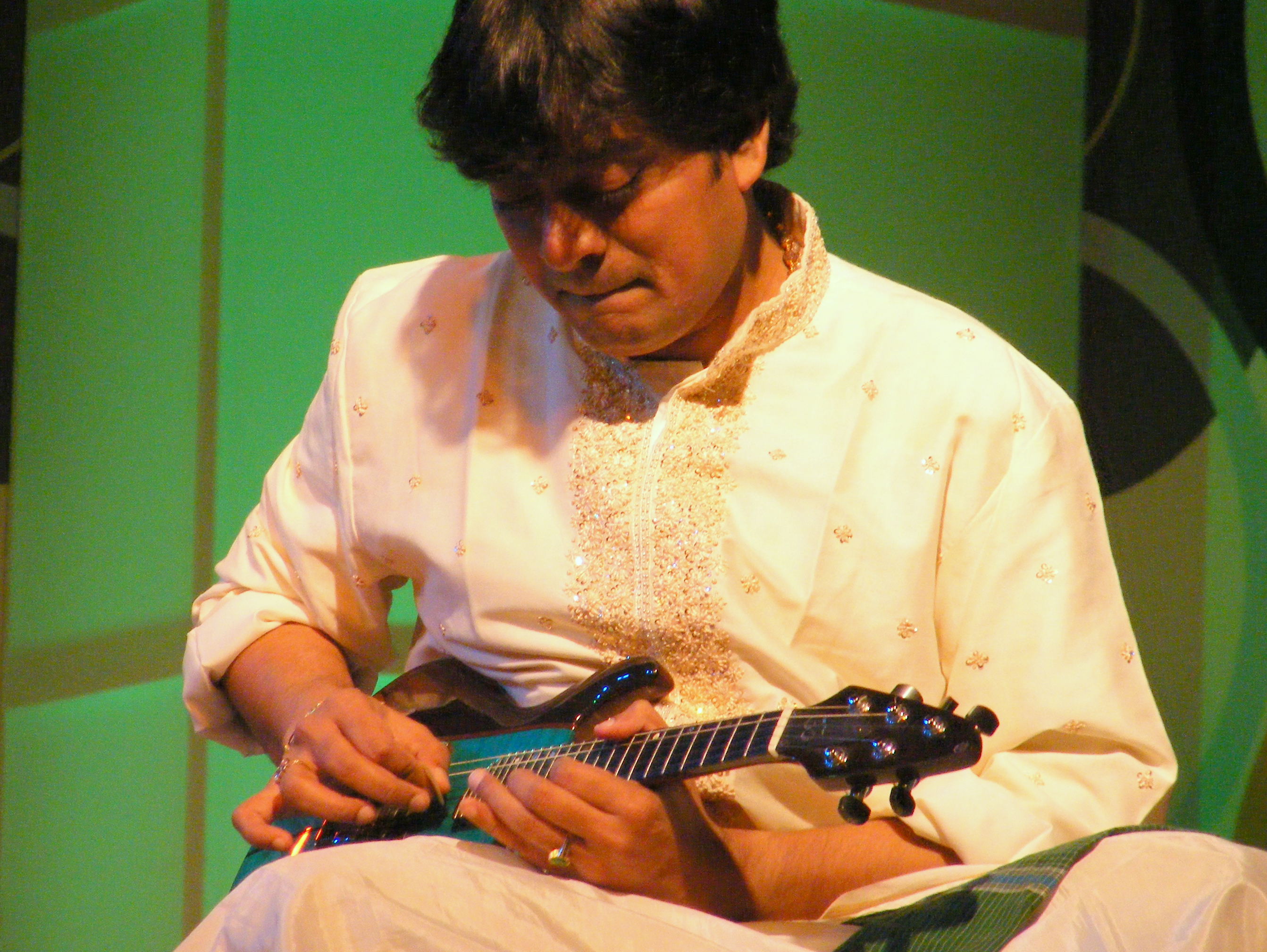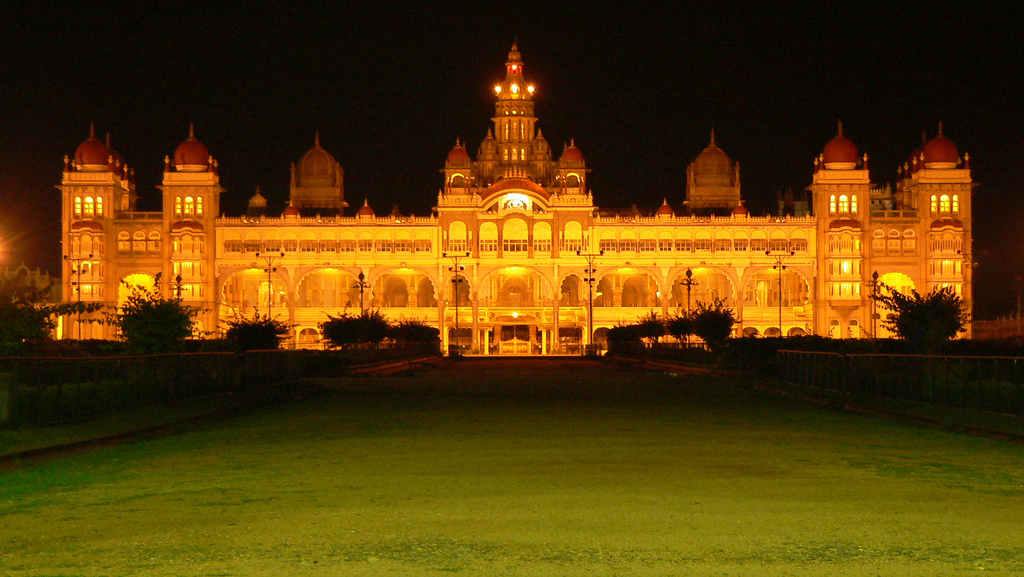|
Madras A. Kannan
Madras A. Kannan was a Mridangam exponent from Tamil Nadu, India. Due to his outstanding performances in the field of percussion, he is often called as the ''Mrudanga Samrat'' which literally means "Emperor of Mridangam". He received several awards including Sangeet Natak Akademi Award and Kalaimamani. Biography A. Kannan was born in 1920 in Madras (now Chennai) in Tamil Nadu. At the age of six, he learned Mridangam from Peetambara Desai. Later he became a disciple of Thanjavur Ramadas Rao. Although he studied Veena and Carnatic music with Mridangam, he established himself only in Mridangam. His father Adhimoolam who played a major role in grooming him, was instrumental in making him concentrate only in mridangam. At the age of 12, he recited the Mridangam in front of Maharaja Krishna Rajendra Wadiyar at the Mysore Palace. In 1981, he was appointed as a state artiste by Tamil Nadu government. Kannan has worked as a staff artist at All India Radio, Chennai and has also taught ... [...More Info...] [...Related Items...] OR: [Wikipedia] [Google] [Baidu] |
Mridangam
The mridangam is a percussion instrument of ancient origin. It is the primary rhythmic accompaniment in a Carnatic music ensemble. In Dhrupad, a modified version, the pakhawaj, is the primary percussion instrument. A related instrument is the Kendang, played in Maritime Southeast Asia. During a percussion ensemble, the mridangam is often accompanied by the ghatam, the kanjira, and the morsing. Etymology The word "Mridangam" is formulated by the union (sandhi) of the two Sanskrit words ''mŗt'' (clay or earth) and ''anga'' (limb), as the earliest versions of the instrument were made of hardened clay. Legend In ancient Hindu sculpture, painting, and mythology, the mridangam is often depicted as the instrument of choice for a number of deities including Ganesha (the remover of obstacles) and Nandi, who is the vehicle and follower of Shiva. Nandi is said to have played the mridangam during Shiva's primordial '' tandava'' dance, causing a divine rhythm to resound acros ... [...More Info...] [...Related Items...] OR: [Wikipedia] [Google] [Baidu] |
Ariyakudi Ramanuja Iyengar
Ariyakudi Ramanuja Iyengar (19 May 1890 – 23 January 1967), popularly known as ''Ariyakudi'', was a Carnatic music vocalist, born in Ariyakudi, a town in the present-day Sivaganga district of Tamil Nadu. Ariyakudi developed a unique style of singing which came to be known as ''The Ariyakudi Tradition'' and is followed by his students. He is credited with establishing the modern '' katcheri'' (concert) traditions in Carnatic music. In 1954, he was awarded the Sangeet Natak Akademi Fellowship, the highest honour conferred by Sangeet Natak Akademi, India's National Academy for Music, Dance and Drama. This was followed by Padma Bhushan by Government of India in 1958. Early life and background Ariyakudi was born in Ariyakudi, a town in the Karaikudi district, present-day Sivaganga district of Tamil Nadu, South India, on 19 May 1890. He studied under Pudukottai Malayappa Iyer and Namakkal Narasimha Iyengar in his early years. Later he studied for several years under Poochi Sr ... [...More Info...] [...Related Items...] OR: [Wikipedia] [Google] [Baidu] |
Indian Male Classical Musicians
Indian or Indians may refer to: Peoples South Asia * Indian people, people of Indian nationality, or people who have an Indian ancestor ** Non-resident Indian, a citizen of India who has temporarily emigrated to another country * South Asian ethnic groups, referring to people of the Indian subcontinent, as well as the greater South Asia region prior to the 1947 partition of India * Anglo-Indians, people with mixed Indian and British ancestry, or people of British descent born or living in the Indian subcontinent * East Indians, a Christian community in India Europe * British Indians, British people of Indian origin The Americas * Indo-Canadians, Canadian people of Indian origin * Indian Americans, American people of Indian origin * Indigenous peoples of the Americas, the pre-Columbian inhabitants of the Americas and their descendants ** Plains Indians, the common name for the Native Americans who lived on the Great Plains of North America ** Native Americans in the Un ... [...More Info...] [...Related Items...] OR: [Wikipedia] [Google] [Baidu] |
Carnatic Instrumentalists
This is a list of Carnatic instrumentalists: musicians famous for playing the carnatic music of South India. Musicians are listed by the instrument they have played. Bowed strings Violin * Lalgudi Jayaraman * Kunnakudi Vaidyanathan * Tirumakudalu Chowdiah * Dwaram Venkataswamy Naidu * M. S. Gopalakrishnan * T. N. Krishnan * H.K. Venkatram * L. Vaidyanathan * L. Subramaniam * L. Shankar * Mysore brothers - Mysore Nagaraj & Dr. Mysore Manjunath * Embar Kannan * G. J. R. Krishnan and Lalgudi Vijayalakshmi * Ragini Shankar * A. Kanyakumari * Ganesh and Kumaresh * M. Narmadha * Vittal Ramamurthy * V. V. Ravi * Nedumangad Sivanandan * Avaneeswaram S R Vinu * Delhi P. Sunder Rajan * B. Sasikumar * Gingger Shankar * Jyotsna Srikanth * Balabhaskar * Abhijith P. S. Nair * Ambi Subramaniam Plucked strings Veena * Karaikudi Sambasiva Iyer * Challapally Chitti Babu * Emani Sankara Sastry * S. Balachander * Doraiswamy Iyengar * E. Gayathri * Jayanthi Kumare ... [...More Info...] [...Related Items...] OR: [Wikipedia] [Google] [Baidu] |
Mridangam Players
The mridangam is a percussion instrument of ancient origin. It is the primary rhythmic accompaniment in a Carnatic music ensemble. In Dhrupad, a modified version, the pakhawaj, is the primary percussion instrument. A related instrument is the Kendang, played in Maritime Southeast Asia. During a percussion ensemble, the mridangam is often accompanied by the ghatam, the kanjira, and the morsing. Etymology The word "Mridangam" is formulated by the union (sandhi) of the two Sanskrit words ''mŗt'' (clay or earth) and ''anga'' (limb), as the earliest versions of the instrument were made of hardened clay. Legend In ancient Hindu sculpture, painting, and mythology, the mridangam is often depicted as the instrument of choice for a number of deities including Ganesha (the remover of obstacles) and Nandi, who is the vehicle and follower of Shiva. Nandi is said to have played the mridangam during Shiva's primordial ''tandava'' dance, causing a divine rhythm to resound across the ... [...More Info...] [...Related Items...] OR: [Wikipedia] [Google] [Baidu] |
2019 Deaths
This is a list of deaths of notable people, organised by year. New deaths articles are added to their respective month (e.g., Deaths in ) and then linked here. 2022 2021 2020 2019 2018 2017 2016 2015 2014 2013 2012 2011 2010 2009 2008 2007 2006 2005 2004 2003 2002 2001 2000 1999 1998 1997 1996 1995 1994 1993 1992 1991 1990 1989 1988 1987 See also * Lists of deaths by day * Deaths by year {{DEFAULTSORT:deaths by year ... [...More Info...] [...Related Items...] OR: [Wikipedia] [Google] [Baidu] |
1920 Births
Nineteen or 19 may refer to: * 19 (number), the natural number following 18 and preceding 20 * one of the years 19 BC, AD 19, 1919, 2019 Films * ''19'' (film), a 2001 Japanese film * ''Nineteen'' (film), a 1987 science fiction film Music * 19 (band) 19 was a Japanese pop/folk duo. Its members were Kenji Okahira and Keigo Iwase The Japanese language has a system of honorific speech, referred to as , parts of speech that show respect. Their use is mandatory in many social situations. Ho ..., a Japanese pop music duo Albums * ''19'' (Adele album), 2008 * ''19'', a 2003 album by Alsou * ''19'', a 2006 album by Evan Yo * ''19'', a 2018 album by MHD * ''19'', one half of the double album '' 63/19'' by Kool A.D. * '' Number Nineteen'', a 1971 album by American jazz pianist Mal Waldron * ''XIX'' (EP), a 2019 EP by 1the9 Songs * "19" (song), a 1985 song by British musician Paul Hardcastle. * "Nineteen", a song by Bad4Good from the 1992 album ''Refugee (Bad4 ... [...More Info...] [...Related Items...] OR: [Wikipedia] [Google] [Baidu] |
Mysore Dasara
Mysore Dasara is the ''Nadahabba'' (state festival) of the state of Karnataka in India. It is a 10-day festival, starting with nine nights called Navaratri and the last day being Vijayadashami. The festival is observed on the tenth day in the Hindu calendar month of ''Ashvina'', which typically falls in the Gregorian months of September and October. The Hindu festival of Dasara, Navratri and Vijayadashami celebrates the victory of good over evil. It was the day in the Hindu legends when Goddess Chamundeshwari (Durga) killed the demon Mahishasura. Mahishasura is the demon whose slaying by the Goddess gave the city the name Mysuru. The Mysuru tradition celebrates the warriors and the state fighting for the good during this festival, ritually worshipping and displaying the state sword, weapons, elephants, horses along with Hindu Devi goddess in her warrior form (predominantly) as well as the Vishnu avatar Rama. The ceremonies and a major procession is traditionally presided by the ... [...More Info...] [...Related Items...] OR: [Wikipedia] [Google] [Baidu] |
Parur Sundaram Iyer
Parur Sundaram Iyer (1891—1974) was an Indian violinist from Kerala who had mastered both the streams of Indian Classical Music, his native Carnatic style and Hindustani. Iyer received the Kerala Sangeetha Nataka Akademi Award in 1972. Playing Style He developed a style of playing which is known as Parur Bani, named after his native place named Parur. Though he was from the place named Parur in the Indian state of Kerala, and thus grew up in the milieu of Carnatic music, he traveled to Mumbai in 1909 to learn Hindustani Sangeet from Pandit V D Paluskar. He served as a faculty member at Gandharva Maha Vidyalaya, Mumbai. He returned to Chennai in 1922. He proceeded to develop a new style which added some elements of Hindustani music to Carnatic violin playing. He won the admiration of fellow musicians like Harikesanallur Muttiah Bhagavadar and Chembai Vaidyanata Bhagavadar. Sundaram Iyer was fond of Abdul Karim Khan saab’s music and used to organize Chamber concerts at his home ... [...More Info...] [...Related Items...] OR: [Wikipedia] [Google] [Baidu] |
Sriram Parthasarathy
Sriram Parthasarathy is a Carnatic Classical Vocalist and a renowned playback singer . He hails from a family of Classical Musicians. Discography Sriram Parthasarathy is a disciple of Neyveli Santhanagopalan. He has recorded several singles and released them in the classical genre. He has also recorded many film songs as well for many Veteran music directors like Ilayaraja, A. R. Rahman, Vidyasagar, Harris Jayaraj and Deva. He has also won awards for his beautiful renditions. Sriram's ultimate hits have been "Aanandha Yazhai" from the movie Thanga Meengal has won National award for its lyrics, ''Elangathu Veesudhe'' from the movie Pithamagan and ''Suttum Vizhi Choodare'' from Ghajini. Sriram received appreciations for his rendition in 'Shades of Blue: A Musical Tribute to Venmurasu' sung along with Kamal Haasan Kamal Haasan (born 7 November 1954) is an Indian actor, filmmaker, screenwriter, playback singer, television presenter and politician who works mainly in T ... [...More Info...] [...Related Items...] OR: [Wikipedia] [Google] [Baidu] |
Sirkazhi Govindarajan
Sirkazhi Govindarajan (19 January 1933 – 24 March 1988) was an Indian Tamil Carnatic vocalist and a leading playback singer of Indian cinema. Early life Govindarajan, was born on 19 January 1933 at Sirkazhi (a small town in present day Mayiladuthurai district, Tamil Nadu; famed birthplace of Sambandar, one of the 63 Nayanars of the Saiva faith) to Siva Chidambaram and Avayambal Ammal. At the age of eight, Govindarajan began to perform at the Tirupurasundari Temple on the occasion of the Gnana Paal Festival. Musical education He graduated from the Tamil Isai College in Chennai (Madras) in 1949 with the degree 'Isaimani'. He also graduated with the Degree of 'Sangeetha Vidwan'. At the same time, he started rigorous training (Gurukulavasam) under his Guru Thiruppampuram Swaminatha Pillai, who was then a Professor at the Central College of Carnatic Music, Madras. Under his tutelage and in-depth study, he gained knowledge of the nuances and intricacies of Indian Music, espe ... [...More Info...] [...Related Items...] OR: [Wikipedia] [Google] [Baidu] |

